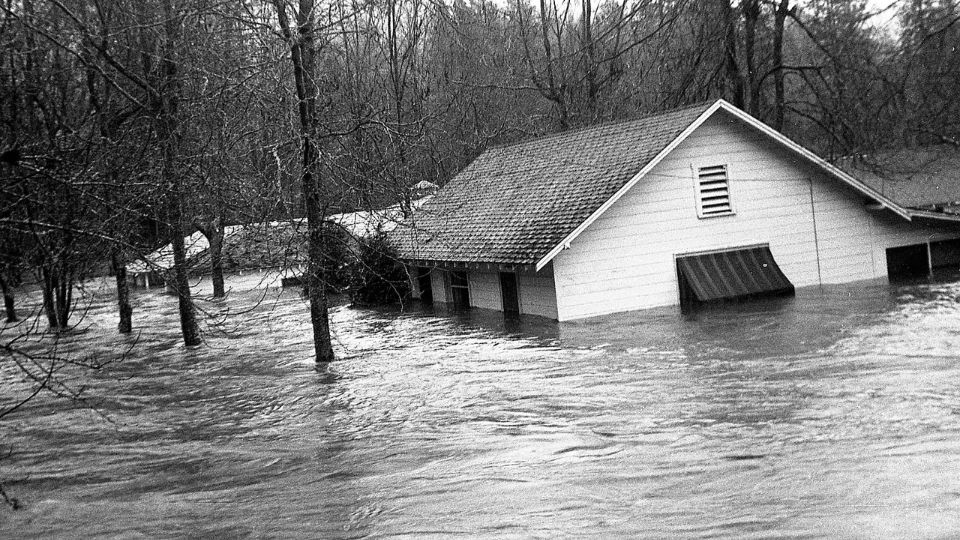California is famous for its sunny weather, stunning landscapes, and varied culture. However, the state has also experienced many destructive natural disasters, including earthquakes, wildfires, floods, and landslides. One of the most dangerous and damaging events that many people don’t know about is the Great Flood of 1862.
The Great Flood of 1862 was a major flood that occurred in that year
The Great Flood of 1862 was a long period of heavy rain that lasted for 43 days, from December 1861 to January 1862. It impacted the entire western coast of the United States. The storms brought a lot of rain and snow, which made rivers overflow, dams break, and landslides happen.
The floodwaters covered cities, towns, farms, and mines, causing damage to homes, buildings, bridges, roads, and crops. The flood also led to the spread of diseases like typhoid, cholera, and malaria. It resulted in the deaths of many people and animals.
What was the reason behind the Great Flood of 1862?
The Great Flood of 1862 happened because of a rare weather event called an atmospheric river. An atmospheric river is a long and narrow strip of wet air that carries water vapor from the tropics to places farther away from the equator.
When a long, narrow band of moisture in the atmosphere called an atmospheric river comes across a mountain range like the Sierra Nevada, it lets go of its moisture and it falls as rain or snow, resulting in heavy rainfall or snowfall. Atmospheric rivers cause a lot of heavy rain in the western United States, and they can produce more water than the Mississippi River.
In the winter of 1861-1862, a series of strong weather patterns called atmospheric rivers hit the west coast. These rivers caused a long-lasting storm system that lasted for over a month. The storms were caused by a strong El Niño, which is a climate pattern that makes the Pacific Ocean warmer than usual. There was also a negative phase of the North Atlantic Oscillation, which is a pressure difference that affects the jet stream and the paths of storms. The combination of these factors led to a situation where the Great Flood of 1862 occurred.
Also read: A Man From Pennsylvania Sentenced to Nine Years for Drug Trafficking
What were the effects of the Great Flood of 1862?
The Great Flood of 1862 had a big impact on the economy, society, and environment of California and the western United States. Here are some of the effects:
1.) The flood caused around $10 million in damages, which would be about $300 million in today’s money.
2.) The flood destroyed around 25% of the land in California that could be taxed, and completely wiped out the state’s agricultural industry.
3.) The flood made the state government move from Sacramento to San Francisco, and almost made the state treasury run out of money.
4.) The flood caused problems for the mining industry, which was the main way that people in the region made money and found jobs.
5.) The flood caused many people, especially Native Americans, to lose their lands, homes, and jobs and forced them to leave their homes.
6.) The flood caused the death of an uncertain number of individuals, with estimates varying from hundreds to thousands, depending on the information source. Some people died from drowning, being exposed to the elements, starvation, or violence. Others died from diseases that spread after the flood.
7.) The flood caused the deaths of many animals, including cattle, sheep, horses, and wild game. This created a risk to public health and a shortage of food.
What lessons can we take away from the Great Flood of 1862?
The Great Flood of 1862 was a huge natural disaster that happened a long time ago. It made people and the government in California and the western United States realize they needed to be more prepared for future disasters. The flood showed that the region is at risk of extreme weather events and needs improved infrastructure, planning, and preparedness. Here are some things we learned from the flood:
1.) After the flood, people built levees, dams, and reservoirs to manage the water and stop flooding from happening again.
2.) The flood led to the creation of irrigation systems in dry areas to help with farming and population growth.
3.) The flood caused the economy to become more diverse, so that it wouldn’t rely too much on mining and farming.
4.) The flood led to the development of rules and regulations to safeguard the region’s natural resources and ecosystems.
The Great Flood of 1862 was a very sad and shocking event, but it also led to new ideas and advancements. The flood demonstrated how the people and society of California and the western United States were able to bounce back and adjust to the difficulties, rebuilding their lives and communities.
The flood demonstrated how important and urgent it is to address the risks and impacts of climate change. This is because climate change could cause similar or even worse disasters in the future. The flood reminds us of how powerful and unpredictable nature can be. It also highlights the importance of being aware and taking action to protect ourselves and our environment.



Leave a Reply